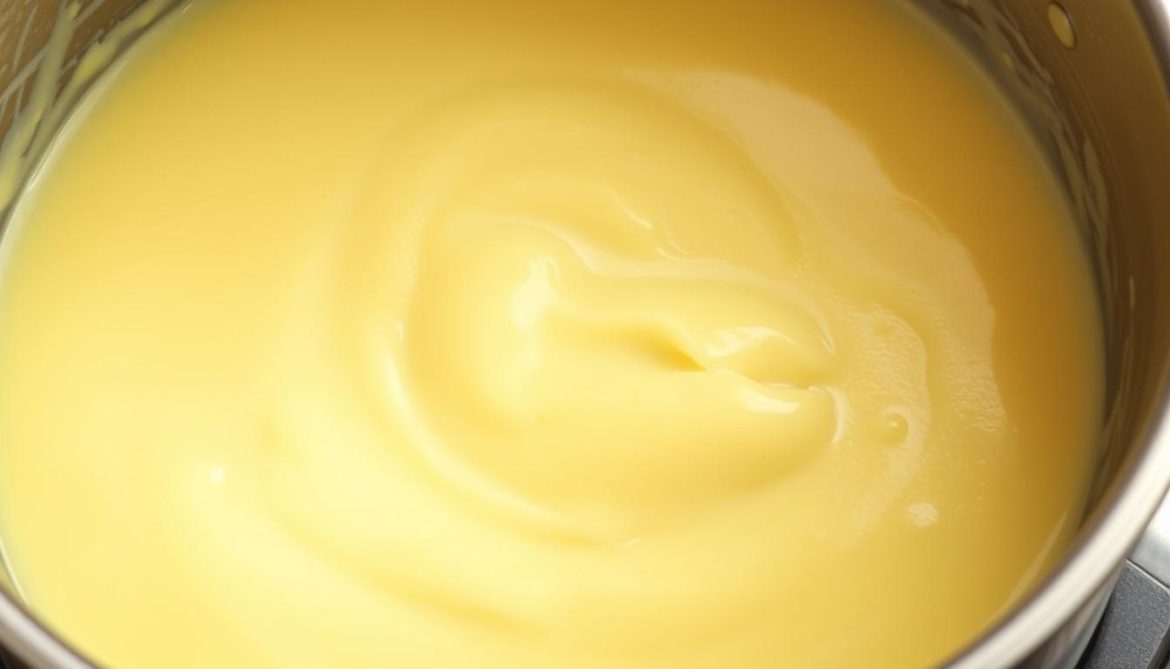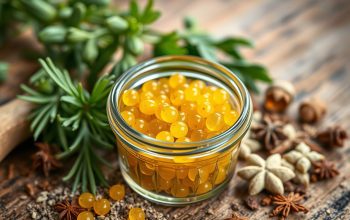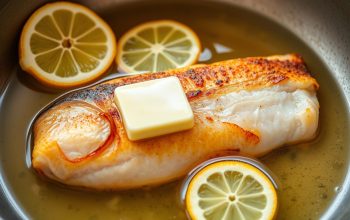Welcome to the world of French cuisine! Today, we’re making the luxurious classic béchamel sauce. This white sauce is key in French cooking. I’m excited to share my best techniques with you.
I’ve spent years mastering this sauce. It’s easy to make, even if it sounds fancy. You’ll soon be making creamy lasagnas and more like a pro.
Béchamel sauce is simple to make. You need just butter, flour, and milk. These ingredients make a smooth sauce that makes any dish special. Get ready to make French cuisine magic in your kitchen!
I’ll show you every step, with tips and tricks I’ve learned. You’ll learn how to make the perfect roux and achieve creamy sauce. Let’s start making culinary magic together!
Understanding the Rich History of French Mother Sauces
French cuisine changed cooking forever. It introduced mother sauces, key to many dishes. These sauces are essential in both professional and home kitchens.
The story of mother sauces started in classical French cuisine. Chefs there created new techniques that changed cooking worldwide. These sauces are the base for endless culinary creations.
Evolution of Classic French Sauces
French cooking made sauce-making systematic, changing cooking forever. The original mother sauces were:
- Béchamel (white sauce)
- Velouté (light stock-based sauce)
- Espagnole (brown sauce)
- Hollandaise (emulsified butter sauce)
- Tomato sauce
The Legacy of Auguste Escoffier
Auguste Escoffier, the King of Chefs, standardized these sauces in the late 19th century. His work made French cuisine systematic. It still shapes professional cooking today.
“Cooking is the art of adjustment and precision.” – Auguste Escoffier
Béchamel’s Place in Culinary Heritage
Béchamel sauce shows French cooking’s beauty. This creamy white sauce is in many classic dishes. It highlights French cuisine’s sophistication.
| Sauce | Primary Ingredients | Classic Use |
|---|---|---|
| Béchamel | Milk, butter, flour | Lasagna, gratins |
| Velouté | White stock, butter, flour | Chicken pot pie |
| Espagnole | Brown stock, tomato, mirepoix | Demi-glace |
Essential Ingredients for Perfect Béchamel Sauce
Making a great béchamel sauce begins with the right ingredients. Let’s explore the three key elements that make a simple white sauce into a true culinary delight!
The Butter Base
Butter is the heart of a smooth béchamel. I suggest using unsalted, high-fat butter from grass-fed cows. The quality of your butter greatly affects the sauce’s richness and flavor.
- Choose European-style butter with higher butterfat content
- Look for butter with a creamy, pale yellow color
- Avoid margarine or low-fat alternatives
Milk Magic
Whole milk adds the creamy texture to your sauce. Don’t use skim or low-fat milk. We aim for a rich, luxurious texture that sticks to the spoon!
“The secret to a perfect béchamel is using the freshest, richest milk you can find.” – Classic French Cooking Wisdom
Nutmeg: The Secret Weapon
A little freshly grated nutmeg can make your béchamel sauce amazing. Always use whole nutmeg and grate it fresh. The difference is incredible!
| Ingredient | Quality Indicators |
|---|---|
| Butter | High butterfat, grass-fed, unsalted |
| Milk | Whole milk, fresh, room temperature |
| Nutmeg | Whole, freshly grated |
Pro tip: Use room temperature ingredients for smoother blending. Your taste buds will love it!
Classic Béchamel Sauce: Basic Techniques
Making the perfect white sauce is an art. It starts with knowing the basic techniques. Let’s explore the world of béchamel. Here, simple steps turn basic ingredients into a culinary masterpiece!
Creating a smooth white sauce needs precision and patience. The key to a great béchamel is mastering its core components and techniques.
Mastering the Roux Base
The roux is the heart of your white sauce. It’s a simple yet crucial mix of butter and flour. Here’s how to make the perfect base:
- Use equal parts butter and flour
- Melt butter over medium heat
- Gradually add flour while stirring constantly
- Cook the roux until it reaches a light golden color
“A perfect roux is the secret weapon of every great chef!” – Culinary Wisdom
Proper Milk Integration Methods
Adding milk to your roux needs a gentle touch. Gradually is the key word here!
- Remove roux from heat
- Slowly pour in warm milk
- Whisk continuously to prevent lumps
- Return to low heat and stir until thickened
Temperature Control Tips
Temperature is crucial for your white sauce. Here are some pro tips for the perfect consistency:
- Use warm milk to prevent lumping
- Keep heat low and steady
- Stir constantly to prevent burning
- Remove from heat when sauce coats the back of a spoon
With these techniques, you’ll make a roux-based white sauce that’s smooth, creamy, and delicious. Practice makes perfect, so don’t be afraid to experiment!
Kitchen Tools and Equipment You’ll Need
To make the perfect classic béchamel sauce, you need more than ingredients. You also need the right kitchen tools. Let’s look at the essential equipment for a smooth, creamy sauce every time.
When making a classic béchamel sauce, your tools are key. I’ll show you the must-have items for an amazing sauce-making experience.
Essential Tools for Béchamel Success
- Heavy-bottomed saucepan (prevents burning)
- Wooden whisk (for smooth mixing)
- Measuring cups and spoons
- Fine-mesh strainer (optional but recommended)
- Rubber spatula
Now, let’s see why each tool is important for making your béchamel sauce:
| Tool | Purpose | Pro Tip |
|---|---|---|
| Heavy-bottomed Saucepan | Distributes heat evenly | Prevents scorching of roux |
| Wooden Whisk | Creates smooth texture | Prevents lumps in sauce |
| Measuring Spoons | Ensures precise ingredient ratios | Key to consistent sauce |
Pro Kitchen Hack: You don’t need every tool. Being creative in the kitchen can help!
“The right tools make cooking a joy, not a chore.” – Culinary Wisdom
Investing in quality kitchen tools will make your béchamel sauce better. Remember, great cooking is about passion, practice, and the right tools.
Mastering the Art of Roux Making
Making the perfect roux is like kitchen magic. It’s a mix of butter and flour that’s the base for many sauces, like béchamel. I’ll share the secrets to making a great roux that will boost your cooking.
Butter and Flour Ratios: The Perfect Balance
The secret to a great roux is the right mix of butter and flour. Here’s a simple guide to get it just right:
- For a light roux: Use equal parts butter and flour (1:1 ratio)
- For a medium roux: Slightly increase flour (1.25:1 ratio)
- For a thick roux: Add more flour (1.5:1 ratio)
Cooking Times for Different Roux Colors
| Roux Color | Cooking Time | Flavor Profile |
|---|---|---|
| White Roux | 2-3 minutes | Mild, delicate |
| Blond Roux | 5-7 minutes | Nutty, light |
| Brown Roux | 10-15 minutes | Deep, rich |
Common Roux Mistakes to Avoid
Even pros can mess up when making roux. Here are common mistakes to watch out for:
- Burning the butter: Keep heat medium-low and stir constantly
- Rushing the process: Take your time developing flavor
- Using the wrong whisk: Choose a flat-bottomed whisk for best results
“A perfect roux is all about patience and attention to detail.” – Professional Chef
Practice makes perfect with roux making. Don’t worry if it’s not perfect at first. With each try, you’ll get better at turning butter and flour into this amazing sauce base.
How to Achieve the Perfect Sauce Consistency
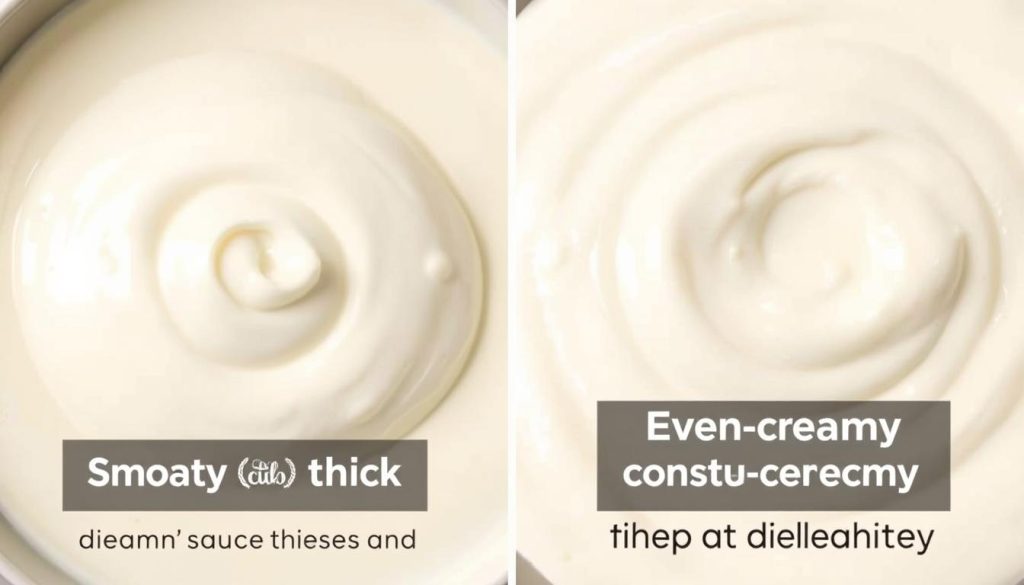
Making a creamy white sauce needs precision and attention to detail. The key to a perfect béchamel is getting its consistency just right. It should be neither too thick nor too thin.
Here are the main techniques to make your white sauce truly special:
- Whisking is your best friend – smooth, consistent movements prevent lumps
- Watch for visual cues that indicate the perfect thickness
- Learn to adjust sauce density with simple techniques
Understanding the balance between roux and milk is crucial. I’ll share my best tips for a silky-smooth white sauce. It will take your dishes to the next level.
| Consistency Level | Description | Best Used For |
|---|---|---|
| Thin | Barely coats the back of a spoon | Soups, light sauces |
| Medium | Coats spoon evenly | Classic béchamel, pasta sauces |
| Thick | Holds shape when spooned | Gratins, casseroles |
*”The difference between a good sauce and a great sauce is in its consistency!”* – Professional Chef’s Secret
Pro tip: If your creamy white sauce becomes too thick, whisk in a little warm milk. Too thin? Simmer and reduce, or add a bit more roux. Practice makes perfect!
Creating the perfect sauce consistency is an art. Don’t get discouraged. Every great chef began where you are now!
Troubleshooting Common Béchamel Problems
Making a classic béchamel sauce can be tricky. But, even top chefs face sauce problems. I’m here to guide you through the most common béchamel issues with ease.
Fixing Lumpy Sauce
Lumpy béchamel sauce can mess up your dish. Here are some quick fixes:
- Use a whisk to break up lumps while cooking
- Strain the sauce through a fine-mesh sieve
- Blend the sauce using an immersion blender
Adjusting Thickness
Getting the right consistency is key for béchamel sauce. Here are some tips:
| Problem | Solution |
|---|---|
| Sauce Too Thin | Cook longer or add more roux |
| Sauce Too Thick | Whisk in warm milk gradually |
Preventing Skin Formation
No one likes a skin on their béchamel sauce. Here’s how to avoid it:
- Cover the surface with plastic wrap directly touching the sauce
- Stir occasionally while cooling
- Keep the sauce warm if serving immediately
“Cooking is about confidence, and a little knowledge goes a long way!” – Julia Child
Remember, practice makes perfect. Every time you make béchamel sauce, you’ll get better. Don’t worry – learning is part of the fun!
Flavor Variations and Seasoning Tips
Exploring béchamel sauce seasonings opens up a world of flavors! A classic white sauce can be so much more than just creamy. With a few simple ingredients, you can turn it into a flavor explosion that will delight your taste buds.
The secret to a great béchamel is in its seasonings. Nutmeg is the traditional choice, adding a warm, sweet flavor. A pinch of freshly grated nutmeg can make an ordinary sauce truly special!
Classic Seasoning Combinations
- Classic Nutmeg Blend
- Freshly grated nutmeg
- White pepper
- Kosher salt
- Herb-Infused Options
- Thyme
- Parsley
- Bay leaf
Pro tip: Always grate your nutmeg fresh for the most intense flavor!
“Seasoning is the secret language of culinary creativity” – Unknown Chef
Exciting Flavor Experiments
Don’t be afraid to try new things with your béchamel. Add:
- Roasted garlic
- Smoked paprika
- Cayenne pepper for a kick
- Dried mustard powder
Each addition can make your creamy sauce unique. The trick is to balance the flavors without overpowering the béchamel.
Traditional French Dishes Using Béchamel
Explore the world of French cuisine with béchamel sauce. It turns simple dishes into amazing meals. Your taste buds will love it.
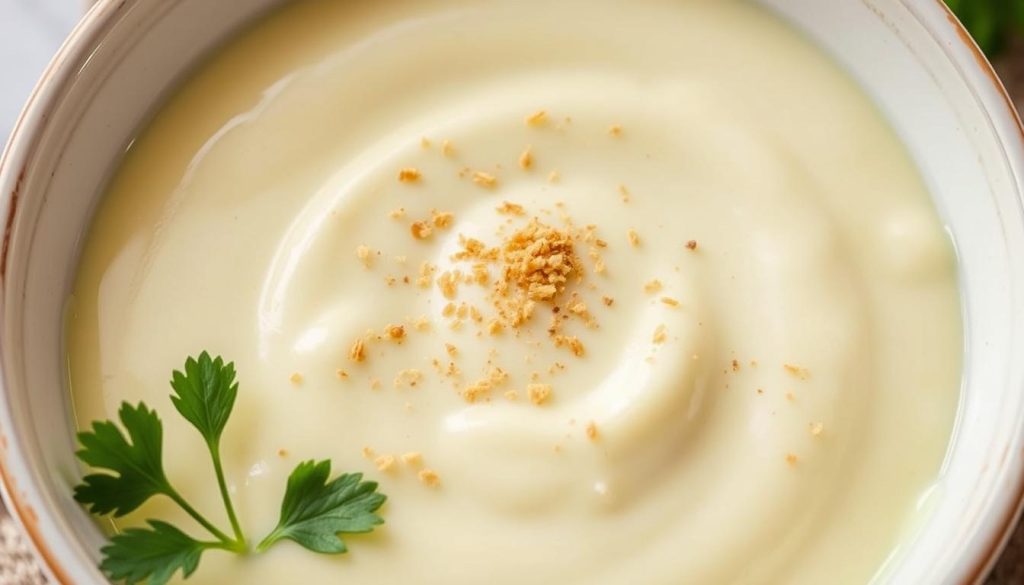
Discover dishes that show béchamel’s magic. They prove its versatility in French cooking.
Classic Croque Monsieur: A Parisian Delight
The Croque Monsieur is a comfort food dream. It’s a grilled cheese sandwich on steroids. Here’s why:
- Layers of ham and cheese
- Toasted bread
- Generous coating of creamy béchamel sauce
- Topped with more cheese and broiled to golden perfection
Mediterranean Twist: Moussaka Variations
Béchamel isn’t just for French dishes! In moussaka, it’s a creamy top layer. This adds depth and richness to a Mediterranean classic.
Lasagne: A Comfort Food Masterpiece
Lasagne gets a boost with béchamel sauce. The creamy white sauce adds texture and flavor. It makes the dish hard to resist.
| Dish | Béchamel Role | Flavor Impact |
|---|---|---|
| Croque Monsieur | Creamy topping | Rich, indulgent |
| Moussaka | Top layer | Smooth, luxurious |
| Lasagne | Binding layer | Creamy, comforting |
“A good béchamel can turn a simple dish into a culinary masterpiece!” – Classic French Chef
Want to wow your friends and family? Master these French cuisine classics. Your béchamel sauce skills will shine!
Storage and Reheating Guidelines
Making a perfect classic béchamel sauce is an art. But knowing how to store and reheat it is just as important. Here are some key tips to keep your homemade sauce creamy and delicious!
Refrigeration Basics
Your classic béchamel sauce prefers cool places. After making the sauce, follow these storage tips:
- Cool the sauce completely before storing
- Use airtight glass or ceramic containers
- Store in the refrigerator for up to 4-5 days
Reheating Techniques
Reheating classic béchamel sauce needs care. Here’s how I do it:
- Remove sauce from refrigerator 15 minutes before reheating
- Use low to medium heat
- Whisk constantly to prevent separation
- Add a splash of milk if sauce seems too thick
“The secret to perfect béchamel is patience and gentle handling!” – Culinary Wisdom
Pro tip: Don’t freeze classic béchamel sauce. It can change the texture and consistency. Fresh is always best!
Quick Storage Hack
Place plastic wrap directly on the sauce surface to prevent a skin from forming. This simple trick keeps your béchamel smooth and ready for its next culinary adventure! 🧑🍳
Health Considerations and Dietary Adaptations
Making a béchamel sauce for everyone means being creative and knowing about different diets. You might need to adjust for lactose intolerance, vegan diets, or healthier options. There are great ways to make this classic sauce work for everyone.
Let’s look at some new ways to make milk and butter substitutions. These keep the creamy texture and rich taste of the original béchamel:
- Plant-based milk alternatives for dairy-free options
- Gluten-free flour replacements
- Low-fat and nutritional modifications
Dairy-Free Milk Alternatives
Trying different milks can be exciting. Almond, soy, and oat milk can make surprisingly smooth sauces. It’s important to use unsweetened milks to keep the sauce’s savory taste.
| Milk Alternative | Flavor Profile | Best Used In |
|---|---|---|
| Almond Milk | Neutral, slightly nutty | Light vegetable gratins |
| Soy Milk | Creamy, protein-rich | Lasagna, moussaka |
| Oat Milk | Smooth, slightly sweet | Cheese-based sauces |
Butter Alternatives
Looking for healthier butter options? Try olive oil, coconut oil, or plant-based butters. Each one adds something special to your béchamel.
“Cooking is about adaptation and creativity – transform your sauce, not compromise its soul!” – Culinary Wisdom
It’s important to think about nutrition. By knowing how to swap out ingredients, you can make a béchamel sauce that’s good for everyone. It’s tasty and fits many diets.
Professional Chef Tips for Restaurant-Quality Results
Professional chefs in French cuisine focus on precision when making béchamel sauce. They choose high-quality dairy and use a heavy-bottomed saucepan for even heat. The secret to great mother sauces is in the small techniques that make a simple white sauce into a masterpiece.
Whisking is an art in professional kitchens. Always whisk continuously and use a flat-bottomed spoon or spatula to avoid scorching. Keep the heat steady at medium-low, and never leave the stove. This is what sets amateur cooks apart from pros when making this classic French sauce.
Pro tip: strain your béchamel through a fine-mesh sieve for a silky texture. This step removes lumps and makes the sauce smooth. Remember, mastering mother sauces takes time, so don’t get discouraged if it’s not perfect at first!
The key to a great béchamel is patience and detail. Chefs say to cook the roux until it’s just golden. This way, the flour loses its raw taste without burning. Your hard work will turn this simple white sauce into a culinary success that would impress any French chef.
